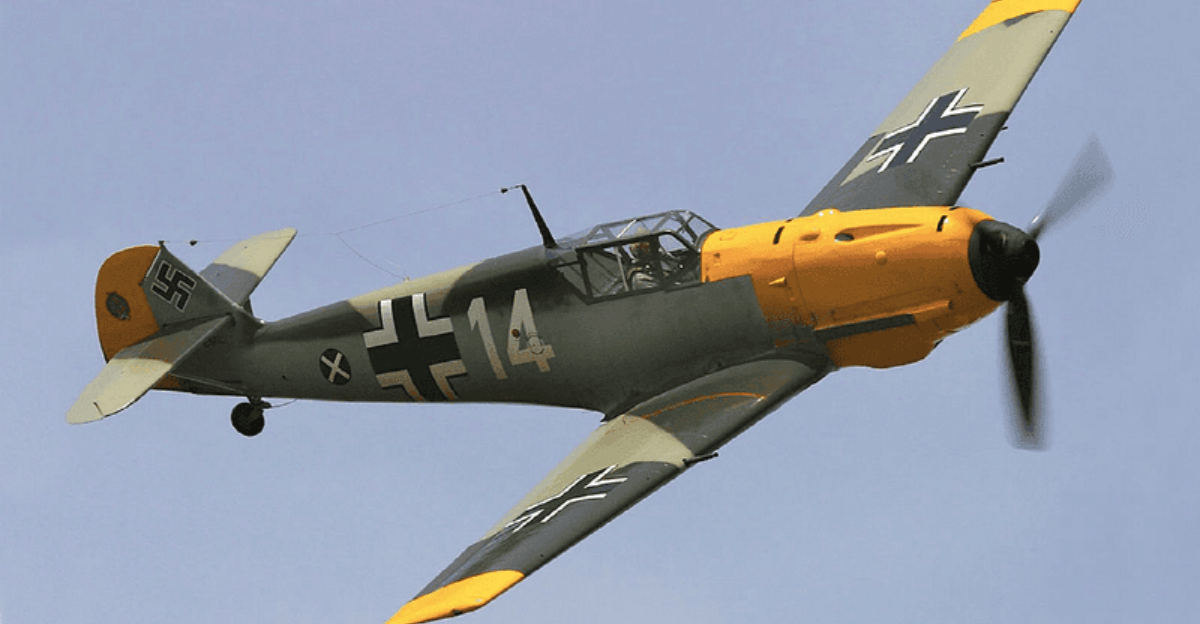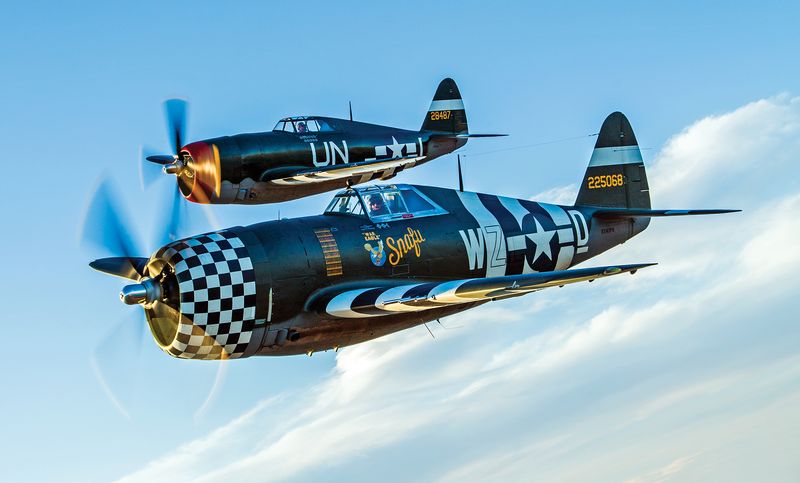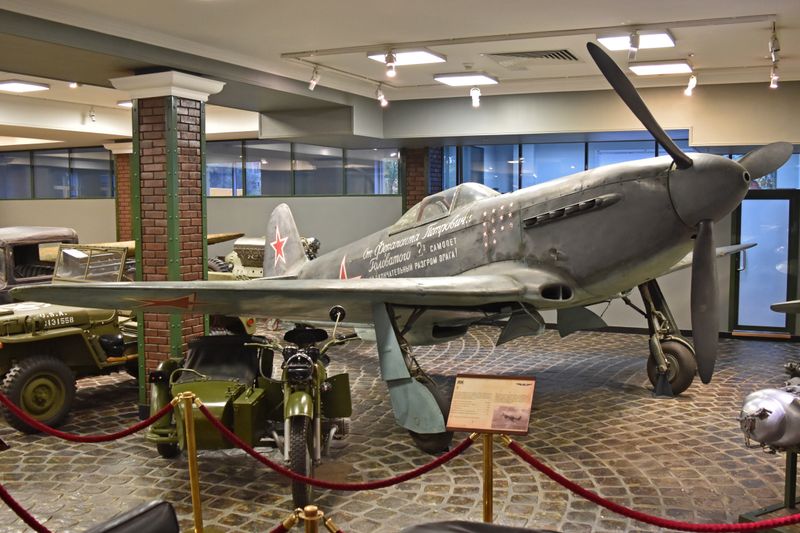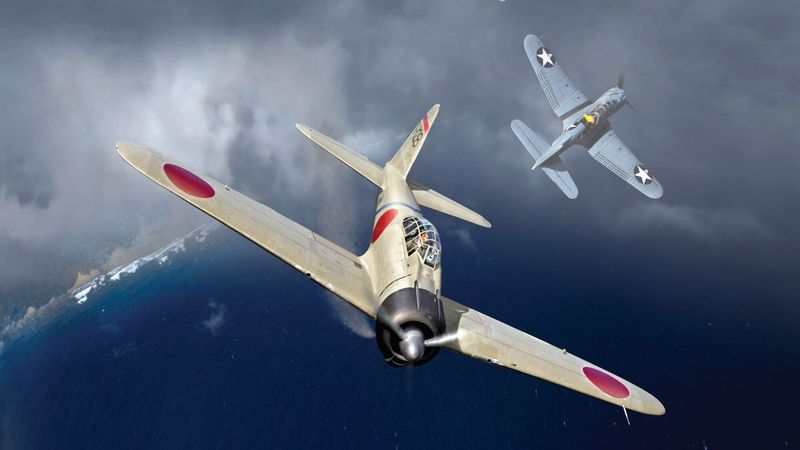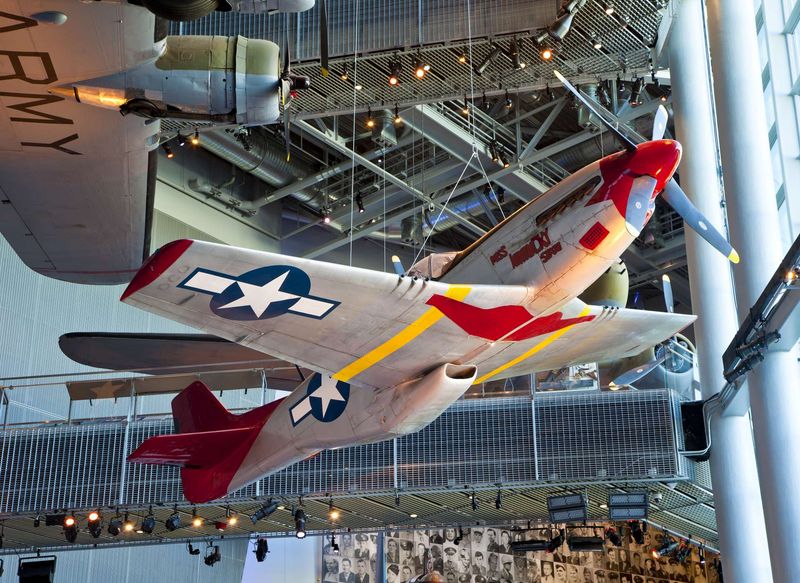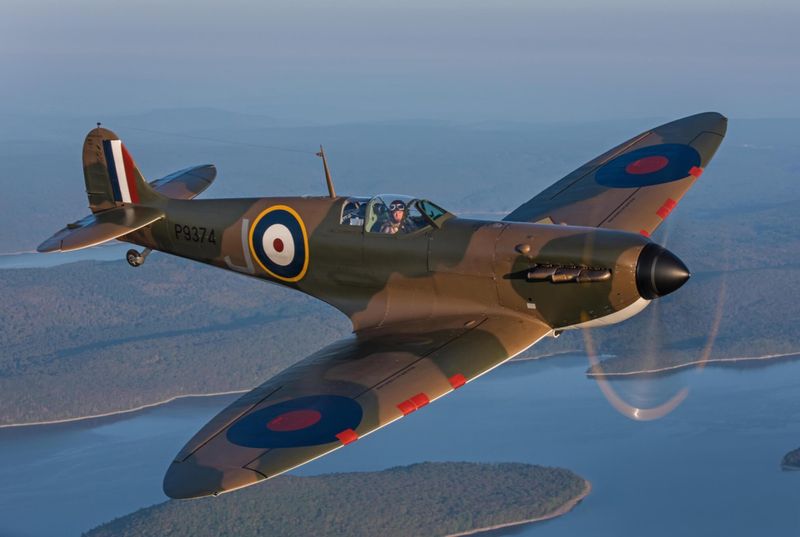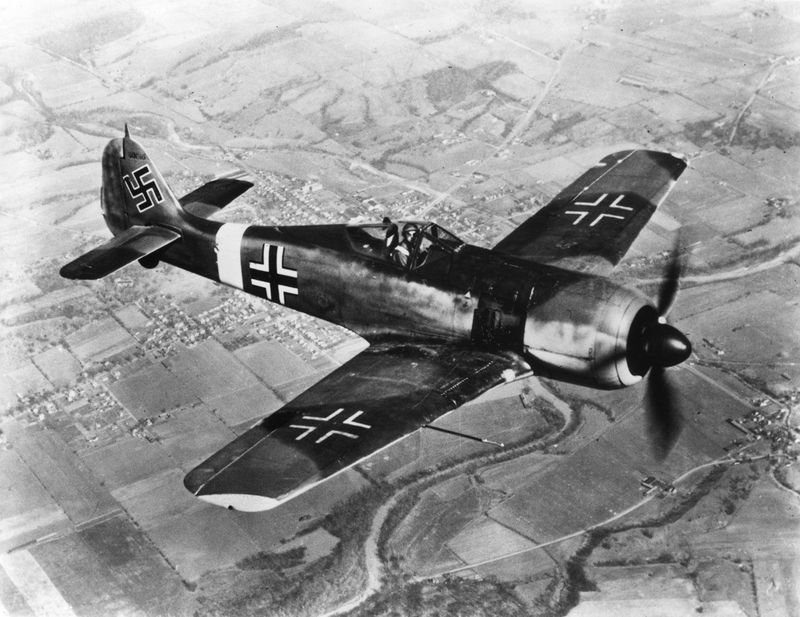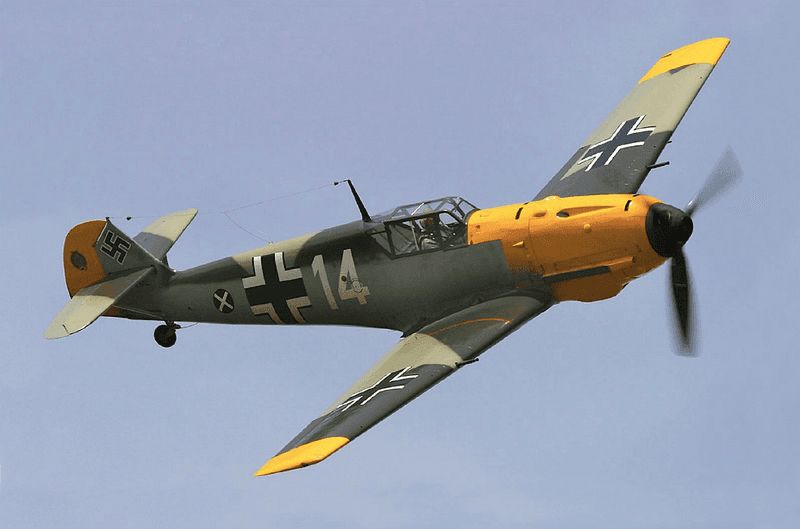Explore the fascinating world of WWII fighter planes, where engineering marvels met the skies in epic battles. Join us as we count down the top 7 fighter planes of World War II that racked up the most kills. From the nimble Mitsubishi Zero to the robust P-47 Thunderbolt, each aircraft had its unique role and story. Dive into the legacy of these legendary machines that shaped aerial warfare.
7. P-47 Thunderbolt (USA)
Nicknamed “The Jug,” the P-47 Thunderbolt was a symbol of American industrial might. With its hefty frame and formidable arsenal, this fighter could take a beating and still come out on top. It played a crucial role in escorting bombers and attacking ground targets across Europe.
Its ability to carry large bomb loads made it versatile in combat, ensuring its legacy as a war-winning machine. Pilots adored its resilience and firepower, often recounting tales of returning home despite severe damage. This workhorse of the skies was key to the Allies’ dominance.
6. Yakovlev Yak-3/Yak-9 (Soviet Union)
The Yakovlev Yak series, including the Yak-3 and Yak-9, were the backbone of the Soviet air force during WWII. Known for their speed and agility, these aircraft were a thorn in the side of the German Luftwaffe.
Despite being lightweight, they were heavily armed and mass-produced, contributing significantly to the Soviet’s ability to push back German forces.
Favored by pilots for their excellent performance at low altitudes, Yak fighters were pivotal in the air battles over the Eastern Front, earning a revered place in aviation history.
5. Mitsubishi A6M Zero (Japan)
In the early years of WWII, the Mitsubishi A6M Zero ruled the Pacific skies. Its unmatched agility and extended range made it a fearsome opponent. This nimble fighter was a nightmare for Allied pilots, dominating early air battles.
The Zero’s design prioritized lightweight construction, allowing for incredible maneuverability but at the cost of durability. However, as the war progressed, newer Allied fighters surpassed it.
Despite this, the Zero remains an iconic symbol of Japanese air power, known for its initial supremacy and relentless spirit in combat.
4. P-51 Mustang (USA)
The P-51 Mustang was a game-changer in the air war over Europe. With its long-range capabilities and blistering speed, this aircraft could escort bombers far into enemy territory, helping to cripple the Luftwaffe’s efforts.
Pilots admired its performance and versatility, which allowed it to excel in both air-to-air and air-to-ground roles. Equipped with advanced technology, the Mustang was a pilot’s dream.
Its role in ensuring Allied air superiority cannot be overstated, making it one of the most celebrated fighters of WWII.
3. Supermarine Spitfire (United Kingdom)
The Supermarine Spitfire is perhaps the most legendary British fighter of WWII, celebrated for its role in the Battle of Britain. This elegant aircraft, with its perfect balance and superior maneuverability, became a symbol of defiance against Nazi aggression.
Pilots loved the Spitfire for its responsive controls and graceful flight characteristics. It excelled in dogfights, often turning the tide in critical battles.
Its iconic status endures, representing the courage of the RAF pilots who defended their homeland with unmatched bravery and skill.
2. Focke-Wulf Fw 190 (Germany)
Dubbed the “Butcher Bird,” the Focke-Wulf Fw 190 was one of Germany’s most feared fighters. Known for its powerful engine and heavy armament, this aircraft was a formidable adversary in the skies over Europe.
It complemented the Bf 109, providing the Luftwaffe with a versatile tool for both offense and defense. Allied pilots respected the Fw 190 for its speed and durability, making it a challenging opponent in aerial combat.
With its impressive combat record, the Fw 190 remains a testament to German engineering prowess during the war.
1. Messerschmitt Bf 109 (Germany)
The Messerschmitt Bf 109 stands as the deadliest fighter of WWII, with over 15,000 kills credited to its name. This agile and powerful machine was flown by many of the war’s top aces, achieving legendary status.
Its versatility allowed it to serve in various roles, from dogfighting to ground attacks. The Bf 109 was instrumental across multiple theaters, including Poland, North Africa, and Russia.
As a symbol of the Luftwaffe’s air power, the Bf 109’s impact on aerial warfare is unmistakable, making it a cornerstone of military aviation history.
